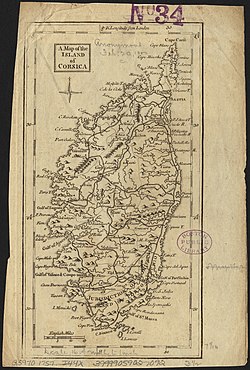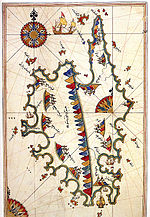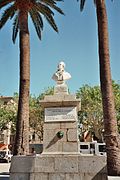
Ajaccio is the capital and largest city of Corsica, France. It forms a French commune, prefecture of the department of Corse-du-Sud, and head office of the Collectivité territoriale de Corse. It is also the largest settlement on the island. Ajaccio is located on the west coast of the island of Corsica, 210 nautical miles (390 km) southeast of Marseille.

Corte is a commune in the Haute-Corse department, on the island of Corsica, France.

Filippo Antonio Pasquale de' Paoli was a Corsican patriot, statesman, and military leader who was at the forefront of resistance movements against the Genoese and later French rule over the island. He became the President of the Executive Council of the General Diet of the People of Corsica and wrote the Constitution of the state.

Women's suffrage – the right of women to vote – has been achieved at various times in countries throughout the world. In many nations, women's suffrage was granted before universal suffrage, in which cases women and men from certain socioeconomic classes or races were still unable to vote. Some countries granted suffrage to both sexes at the same time. This timeline lists years when women's suffrage was enacted. Some countries are listed more than once, as the right was extended to more women according to age, land ownership, etc. In many cases, the first voting took place in a subsequent year.

The Corsican Assembly or Assembly of Corsica is the unicameral legislative body of the territorial collectivity of Corsica. It has its seat at the Grand Hôtel d'Ajaccio et Continental, in the Corsican capital of Ajaccio. After the 2017 territorial elections, the assembly was expanded from 51 to 63 seats, with the executive council expanding from 9 to 11 members.

The first Corsican Constitution was drawn up in 1755 for the short-lived Corsican Republic independent from Genoa beginning in 1755, and remained in force until the annexation of Corsica by France in 1769. It was written in Tuscan Italian, the language of elite culture and people in Corsica at the time.

Corsica is an island in the Mediterranean Sea and one of the 18 regions of France. It is the fourth-largest island in the Mediterranean and lies southeast of the French mainland, west of the Italian Peninsula and immediately north of the Italian island of Sardinia, the nearest land mass. A single chain of mountains makes up two-thirds of the island. As of January 2024, it had a population of 355,528.

The history of Corsica goes back to antiquity, and was known to Herodotus, who described Phoenician habitation in the 6th century BCE. Etruscans and Carthaginians expelled the Phoenicians, and remained until the Romans arrived during the Punic Wars in 237 BCE. Vandals occupied it in 430 CE, followed by the Byzantine Empire a century later.

Italian irredentism in Corsica was a cultural and historical movement promoted by Italians and by people from Corsica who identified themselves as part of Italy rather than France, and promoted the Italian annexation of the island.

The flag of Corsica was adopted by General of the Nation Pasquale Paoli in 1755 and was based on a traditional flag used previously. It portrays a Moor's head in black wearing a white bandana above his eyes on a white background. Previously, the bandana covered his eyes; Paoli wanted the bandana moved to above the eyes to symbolize the liberation of the Corsican people from the Genoese.

Algajola is a commune in the Haute-Corse department of France on the island of Corsica.

The Anglo-Corsican Kingdom, also known officially as the Kingdom of Corsica, was a client state of the Kingdom of Great Britain that existed on the island of Corsica between 1794 and 1796, during the French Revolutionary Wars.
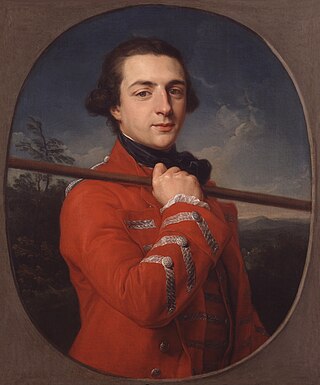
The Corsican Crisis was an event in British politics during 1768–69. It was precipitated by the invasion of the island of Corsica by France. The British government under the Duke of Grafton failed to intervene, for which it was widely criticised and was one of many factors that contributed to its downfall in early 1770.

Corsican nationalism is the concept of a cohesive nation of Corsica and a national identity of its people. The Corsican autonomy movement stems from Corsican nationalism and advocates for further autonomy for the island, if not outright independence from France.

Jacques Pierre Abbatucci was a Corsican who became an officer in the army of Genoese Corsica, Ancien regime France and the First French Republic.
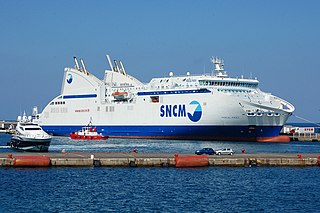
The Pascal Paoli is a RoPax ferry owned and operated by SNCM. She was the last ferry built by the Van der Giessen de Noord yard. On January 5, 2016, Pascal Paoli was transferred to the Maritime Corse Méditerranée, a new entity succeeding SNCM following its takeover by the Corsican businessman Patrick Rocca. On February 3, after a technical stop at the Tunisian yards of Menzel Bourguiba, the ship arrived in Marseilles without any commercial markings. At the end of May 2016, the ship received the red livery of Corsica Linea, the trademark of the Corsican consortium Corsica Maritima which merged with the MCM. The ship departed Marseille for Bastia on May 25, 2016, for its first voyage under its new colors.
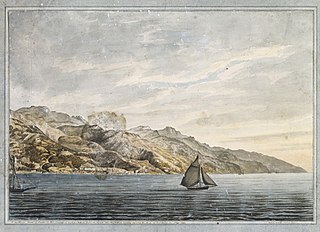
The siege of Bastia was a combined British and Corsican military operation during the early stages of the French Revolutionary Wars. The Corsican people had risen up against the French garrison of the island in 1793, and sought support from the British Royal Navy's Mediterranean Fleet under Lord Hood. After initial delays in the autumn, Hood had supplied a small expeditionary force which had successfully driven the French out of the port of San Fiorenzo in February 1794. Hood then turned his attention to the nearby town of Bastia, which was held by a large French garrison.

The French conquest of Corsica was a successful expedition by French forces of the Kingdom of France under Comte de Vaux, against Corsican forces under Pasquale Paoli of the Corsican Republic. The expedition was launched in May 1768, in the aftermath of the Seven Years' War. A French expeditionary force was landed on the island of Corsica, then ruled by the Corsican Republic. Marching inland to overcome any Corsican opposition, the French force initially suffered an unexpected defeat at the Battle of Borgo. But a new commander, the Comte de Vaux, was appointed to lead the expedition, and decisively defeated the Corsican army at the Battle of Ponte Novu in 1769, effectively bringing an end to Corsican resistance.

The invasion of Corsica was a campaign fought in the spring and summer of 1794 by combined British military and Corsican irregular forces against a French garrison, early in the French Revolutionary Wars. The campaign centred on sieges of three principal towns in Northern Corsica; San Fiorenzo, Bastia and Calvi, which were in turn surrounded, besieged and bombarded until by August 1794 French forces had been driven from the island entirely.
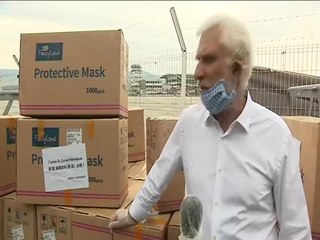
Laurent Marcangeli is a French politician who has been serving as a member of the National Assembly from 2012 to 2017 and again from 2022, representing Corse-du-Sud's 1st constituency.
